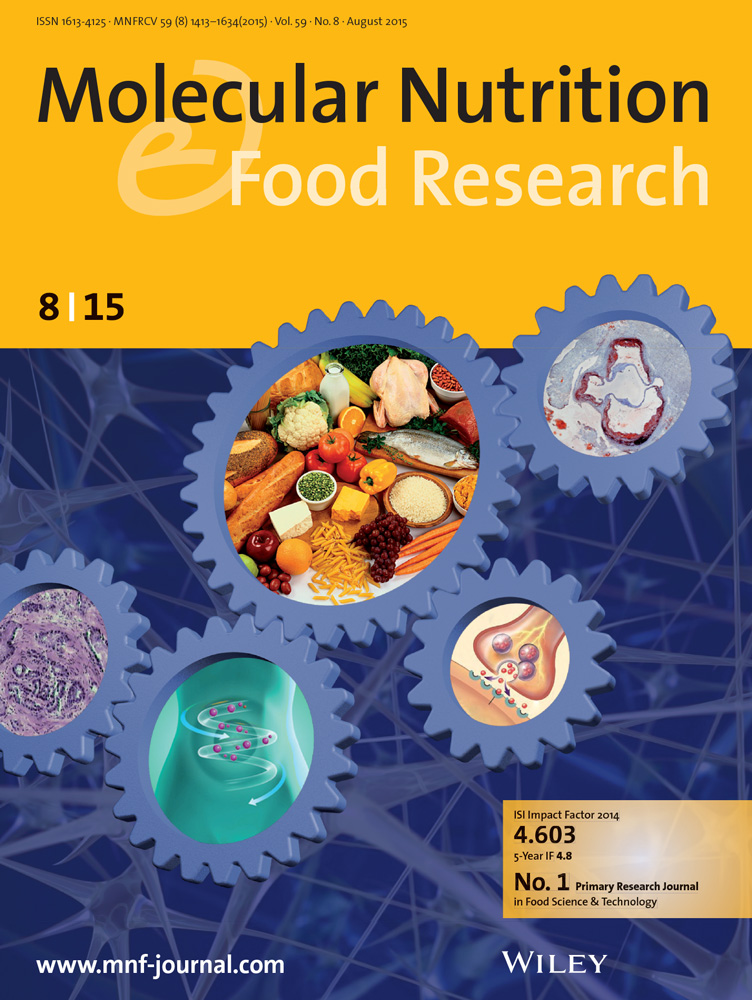Fermented and Germinated Samh Seeds Reduces Hyperlipidemia, Oxidative Stress, and Inflammation in Rats a Fed High-Fat Diet.
IF 4.2
2区 农林科学
Q1 FOOD SCIENCE & TECHNOLOGY
引用次数: 0
Abstract
Hyperlipidemia contributes to hepatic dysfunction, oxidative stress, chronic inflammation, and cardiovascular diseases (CVDs). This study examines the protective effects of raw (raw samh seed flour [RSSF]), germinated (germinated samh seeds flour [GSSF]), and fermented (fermented samh seeds flour [FSSF]) samh seed flour against high-fat diet (HFD)-induced metabolic disturbances in rats.Forty-eight rats were divided into six groups and fed either a standard diet, HFD, or HFD supplemented with 15% RSSF, GSSF, or FSSF for 8 weeks. The FSSF group exhibited the most pronounced reduction in body weight gain, fasting glucose, insulin resistance (homeostatic model assessment of insulin resistance [HOMA-IR]), and serum/liver lipids. FSSF also significantly decreased proinflammatory cytokines (tumor necrosis factor-alpha [TNF-α], interleukin 6 [IL-6], and interleukin-1 beta [IL-1β]) and oxidative stress markers (malondialdehyde [MDA]), while enhancing antioxidant enzymes (superoxide dismutase [SOD], catalase [CAT], and total glutathione [GSH]) and IL-10 levels. Histological analysis revealed marked improvements in liver structure in the FSSF group compared to the HFD group.Fermented samh seed flour notably attenuates hyperlipidemia, inflammation, and oxidative stress while preserving hepatic integrity, highlighting its potential as a functional dietary intervention for managing metabolic syndrome and related liver disorders.发酵和发芽的Samh种子降低高脂肪饮食大鼠的高脂血症、氧化应激和炎症。
高脂血症会导致肝功能障碍、氧化应激、慢性炎症和心血管疾病(cvd)。本研究探讨了生的(生的)、发芽的(萌发的)和发酵的(发酵的)samh种子面粉对大鼠高脂肪饮食(HFD)引起的代谢紊乱的保护作用。48只大鼠被分为6组,分别饲喂标准饮食、HFD或HFD中添加15% RSSF、GSSF或FSSF的HFD,持续8周。FSSF组在体重增加、空腹血糖、胰岛素抵抗(胰岛素抵抗的稳态模型评估[HOMA-IR])和血清/肝脏脂质方面表现出最显著的降低。FSSF还显著降低促炎因子(肿瘤坏死因子-α [TNF-α]、白细胞介素6 [IL-6]和白细胞介素-1β [IL-1β])和氧化应激标志物(丙二醛[MDA]),同时提高抗氧化酶(超氧化物歧化酶[SOD]、过氧化氢酶[CAT]、总谷胱甘肽[GSH])和IL-10水平。组织学分析显示,与HFD组相比,FSSF组肝脏结构有明显改善。发酵samh籽粉在保持肝脏完整性的同时显著减轻高脂血症、炎症和氧化应激,突出了其作为管理代谢综合征和相关肝脏疾病的功能性饮食干预的潜力。
本文章由计算机程序翻译,如有差异,请以英文原文为准。
求助全文
约1分钟内获得全文
求助全文
来源期刊

Molecular Nutrition & Food Research
工程技术-食品科技
CiteScore
8.70
自引率
1.90%
发文量
250
审稿时长
1.7 months
期刊介绍:
Molecular Nutrition & Food Research is a primary research journal devoted to health, safety and all aspects of molecular nutrition such as nutritional biochemistry, nutrigenomics and metabolomics aiming to link the information arising from related disciplines:
Bioactivity: Nutritional and medical effects of food constituents including bioavailability and kinetics.
Immunology: Understanding the interactions of food and the immune system.
Microbiology: Food spoilage, food pathogens, chemical and physical approaches of fermented foods and novel microbial processes.
Chemistry: Isolation and analysis of bioactive food ingredients while considering environmental aspects.
 求助内容:
求助内容: 应助结果提醒方式:
应助结果提醒方式:


